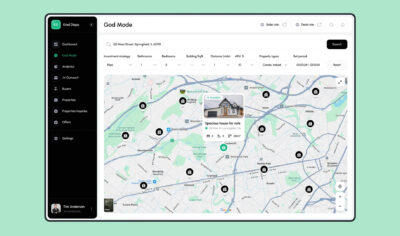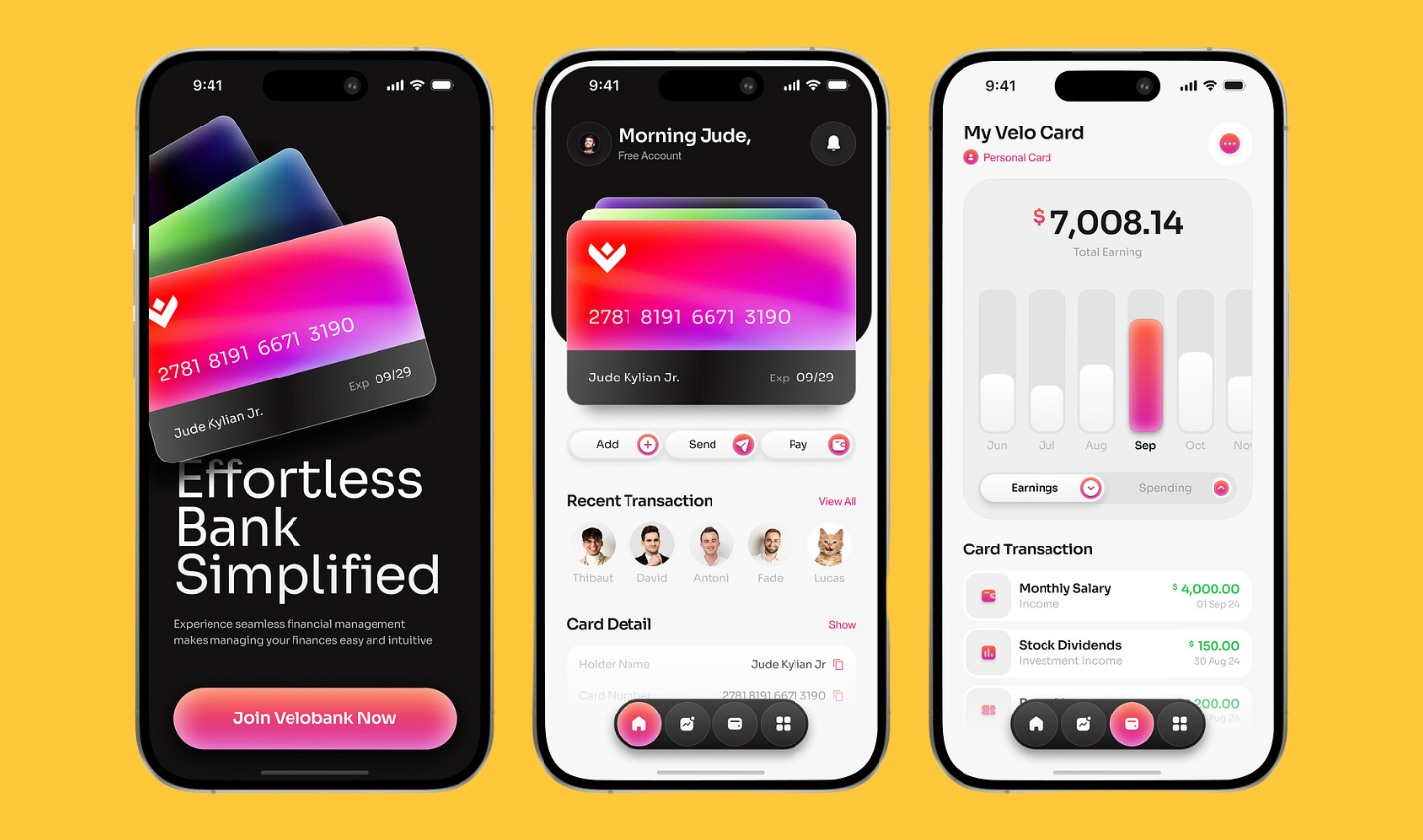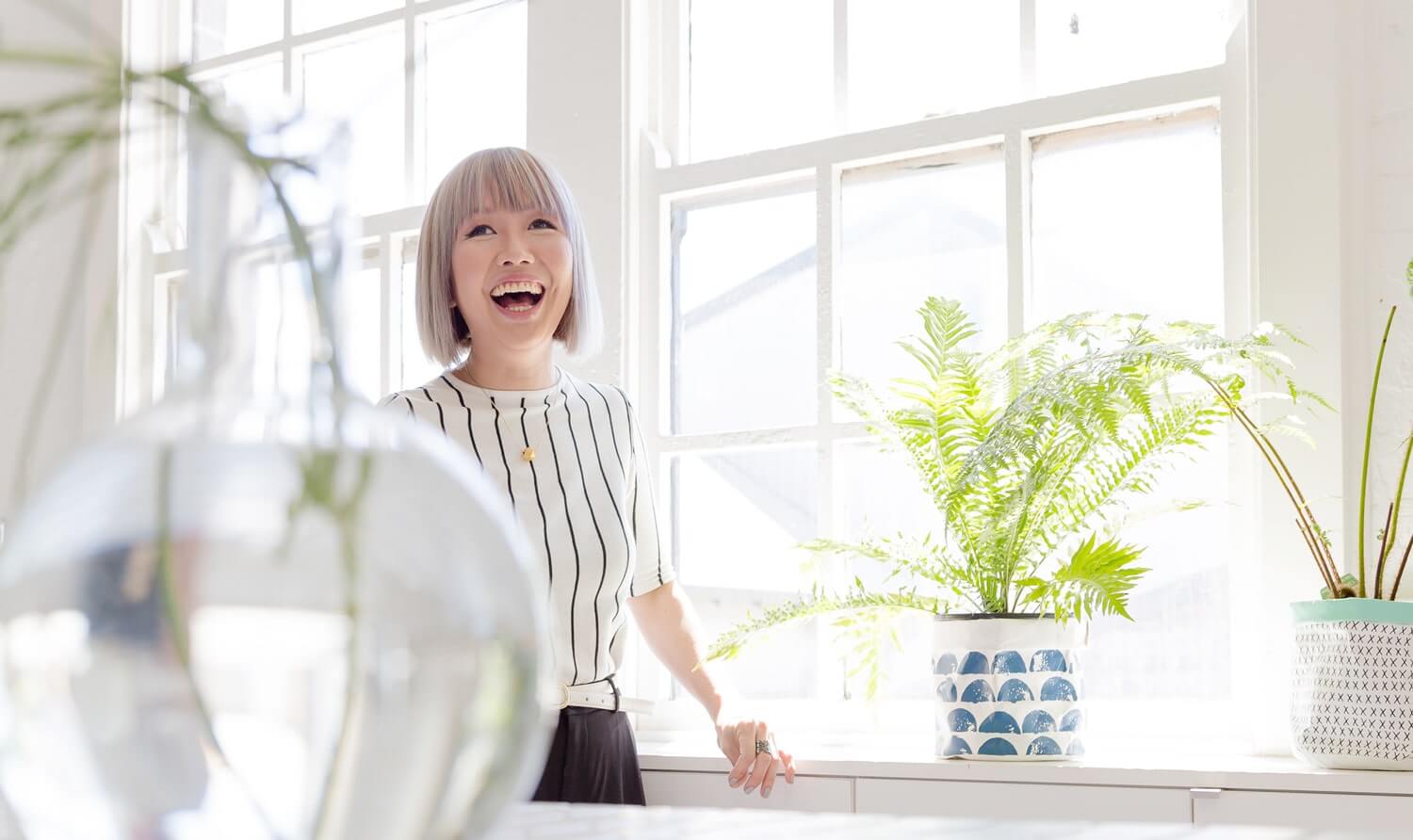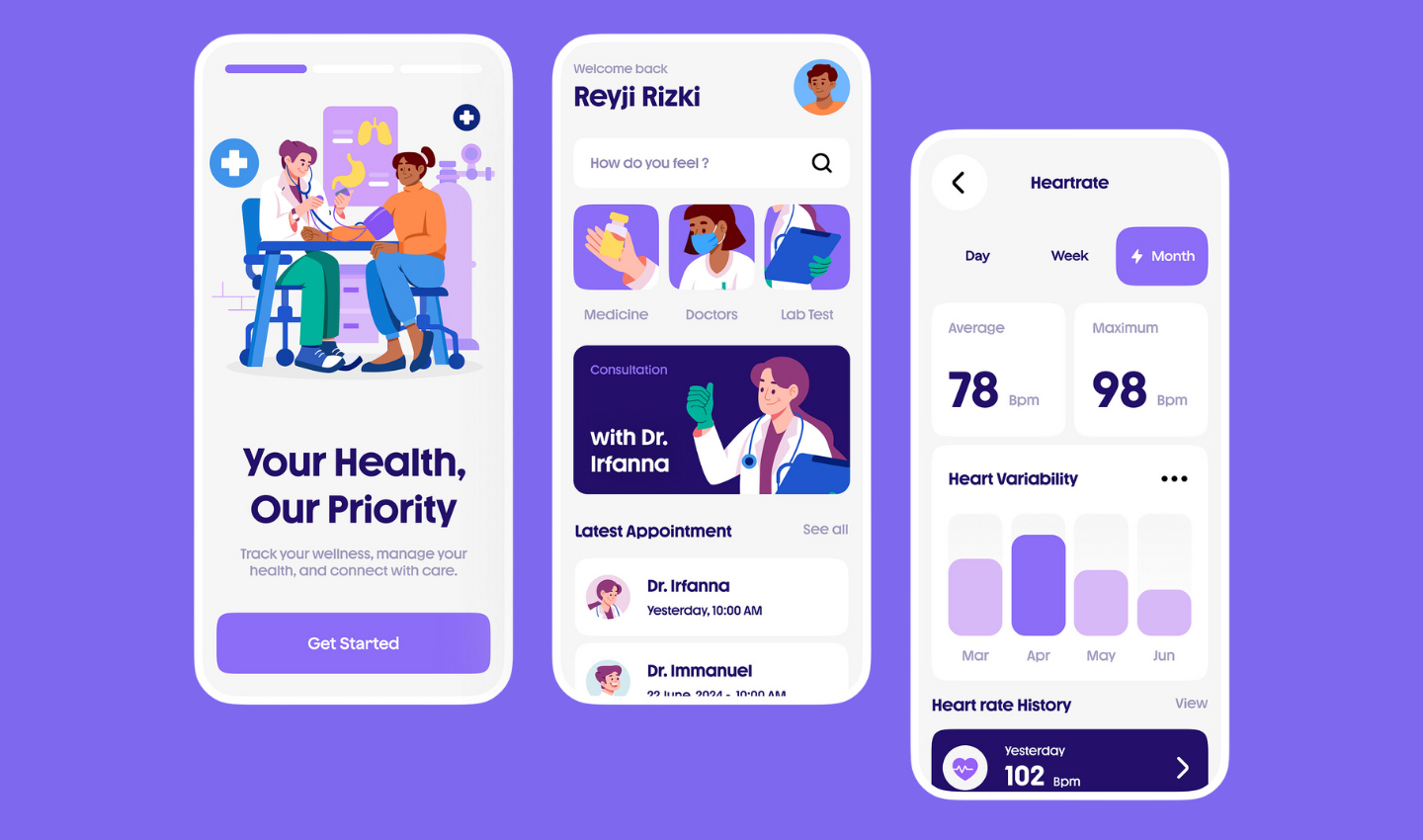
Future of HealthTech Startups: Predictions for 2025 and Beyond
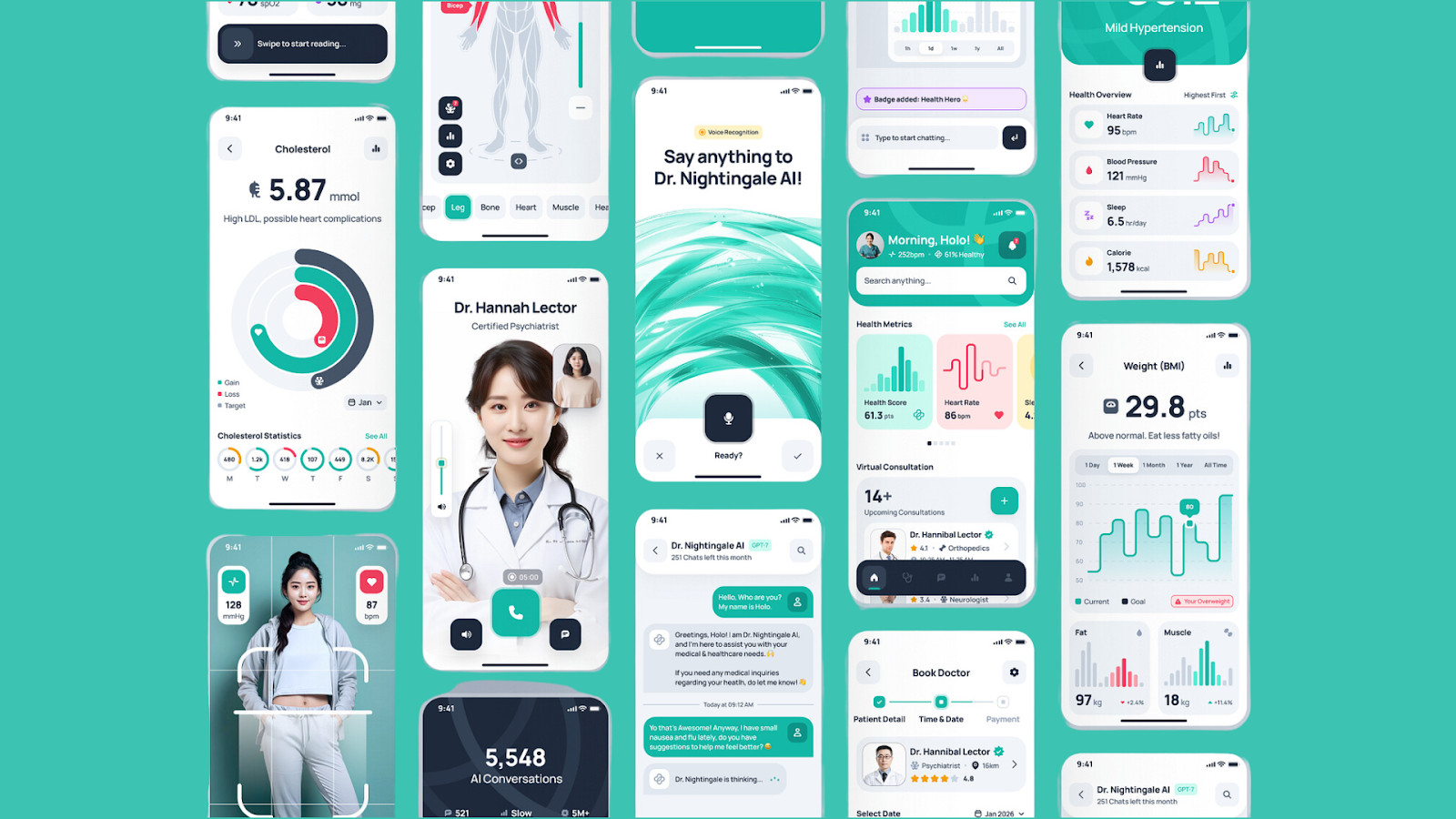
HealthTech startups are on the rise, reshaping the healthcare industry with innovative solutions. However, despite their potential to revolutionize patient care and healthcare delivery, many of these startups face significant challenges in scaling and managing development costs. Traditional software development can be costly and time-consuming, particularly for new HealthTech startups looking to bring solutions to market quickly.
No-code platforms are poised to drive the future of HealthTech startups, enabling rapid development, cost savings, and scalable innovation for 2025 and beyond. By leveraging these platforms, HealthTech startups can overcome traditional barriers and create impactful healthcare solutions faster and more efficiently.
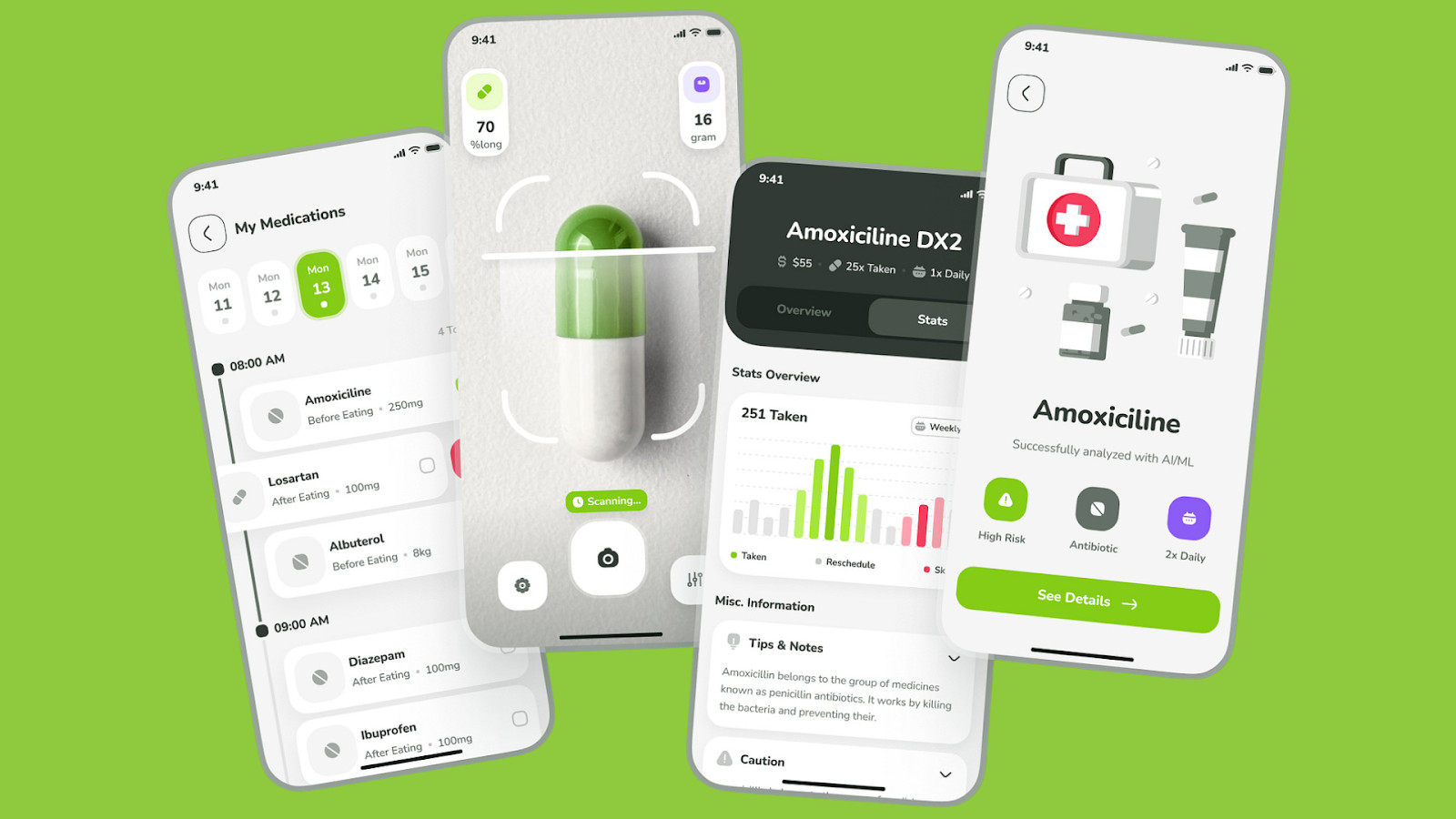
Table of Contents
I. The Growing Influence of HealthTech Startups
The Surge of HealthTech Startups
The number of HealthTech startups has been growing rapidly, addressing various healthcare challenges such as telemedicine, mental health, and patient management. These startups are utilizing digital health solutions to transform patient care, streamline health data management, and deliver personalized services. For instance, some startups are revolutionizing mental health by providing teletherapy services, making mental health support more accessible and affordable to a wider audience. Others are focused on optimizing patient monitoring through remote care systems, allowing healthcare providers to track patients’ health conditions without the need for frequent in-person visits.
These startups are reimagining healthcare delivery in ways that were previously unattainable. By integrating technology into traditional healthcare processes, they are enhancing the efficiency of patient care, improving access to healthcare, and contributing to better health outcomes. The use of advanced technologies, such as AI-driven health diagnostics and wearable health trackers, allows startups to deliver personalized care and real-time health insights that improve patient engagement and treatment outcomes.
Challenges HealthTech Startups Face
Despite their promise, HealthTech startups face several challenges that can hinder their growth. Financial barriers are among the most pressing, as developing software from scratch often requires substantial investments. Many startups struggle to secure funding for development, which can limit their ability to build a comprehensive and competitive product. Additionally, regulatory hurdles, such as meeting HIPAA compliance in the United States, add complexity to product development. Navigating these regulations requires a deep understanding of data privacy laws and ensuring that their solutions meet stringent standards for protecting patient information.
The need for scalability and the ability to iterate quickly further complicate the situation, as startups must adapt to an evolving healthcare landscape while ensuring their solutions remain reliable. In an industry that demands accuracy and compliance, making changes to an existing product can be time-consuming and costly. Furthermore, finding and retaining top development talent is increasingly difficult in a competitive market, as experienced developers are in high demand. These obstacles collectively create barriers for HealthTech startups seeking to scale and deliver impactful healthcare solutions.
II. How No-Code is Disrupting HealthTech Development
What is No-Code Development?
No-code platforms allow non-technical users to build applications using visual interfaces and pre-built components, rather than writing lines of code. These platforms enable users to create functional applications by simply dragging and dropping features, making software development more accessible. This ease of use democratizes software creation, empowering individuals who may not have a technical background to actively participate in building digital health solutions. As a result, healthcare professionals, clinicians, and other stakeholders can be directly involved in developing applications that meet the specific needs of patients and providers.
Benefits of No-Code for HealthTech Startups
- Faster Time to Market
No-code platforms help HealthTech startups build and launch healthcare solutions rapidly, allowing them to bring their products to market in a fraction of the time it would take with traditional coding methods. This accelerated development process is crucial for startups aiming to validate their ideas quickly and respond to market needs. For example, a startup can create a prototype of a telehealth platform in a matter of weeks, gather user feedback, and iterate on the product much faster than if they were using traditional development methods.
- Cost-Efficiency
By reducing the need for large development teams, no-code platforms significantly lower the overall cost of development. This is particularly beneficial for startups that operate on limited budgets and cannot afford to hire a full team of developers. No-code platforms also reduce maintenance costs, as the tools are designed to handle updates and bug fixes automatically, freeing startups from the need to invest in ongoing technical support.
- Flexibility
No-code platforms enable rapid iteration and customization, which is crucial in the healthcare industry where regulations and market needs evolve quickly. Startups can easily adapt their products to changing requirements without significant delays. For instance, if new regulations require changes to data handling practices, startups can use no-code tools to update their applications swiftly, ensuring compliance without disrupting their services.
- Accessibility
No-code platforms empower non-technical founders and healthcare professionals to actively participate in app development. This democratization of development helps bridge the gap between healthcare expertise and software creation, leading to solutions that better meet the needs of patients and providers. By involving healthcare experts directly in the development process, startups can ensure that their products are user-friendly and aligned with the needs of healthcare practitioners and patients alike.
III. Predictions for No-Code and HealthTech Startups in 2025 and Beyond

Prediction 1: No-Code Platforms Will Become Standard for MVP Development
In 2025, more HealthTech startups will turn to no-code platforms to build Minimum Viable Products (MVPs) quickly, allowing for rapid market validation. By using no-code tools, startups can develop prototypes in weeks instead of months, reducing the time and cost needed to gather feedback from users and stakeholders. For example, a startup could build a patient data management system using a no-code platform, enabling healthcare providers to manage patient records efficiently. This rapid development approach allows startups to test their solutions with real users early on, gather insights, and refine their products before making significant investments in further development.
No-code platforms also allow for continuous iteration of MVPs based on user feedback, which is essential in the fast-evolving healthcare sector. With the ability to make adjustments quickly and cost-effectively, startups can better adapt to patient needs, regulatory changes, and technological advancements. This flexibility helps startups validate their product-market fit, attract investors, and ultimately transition from MVP to a full-scale product more smoothly.
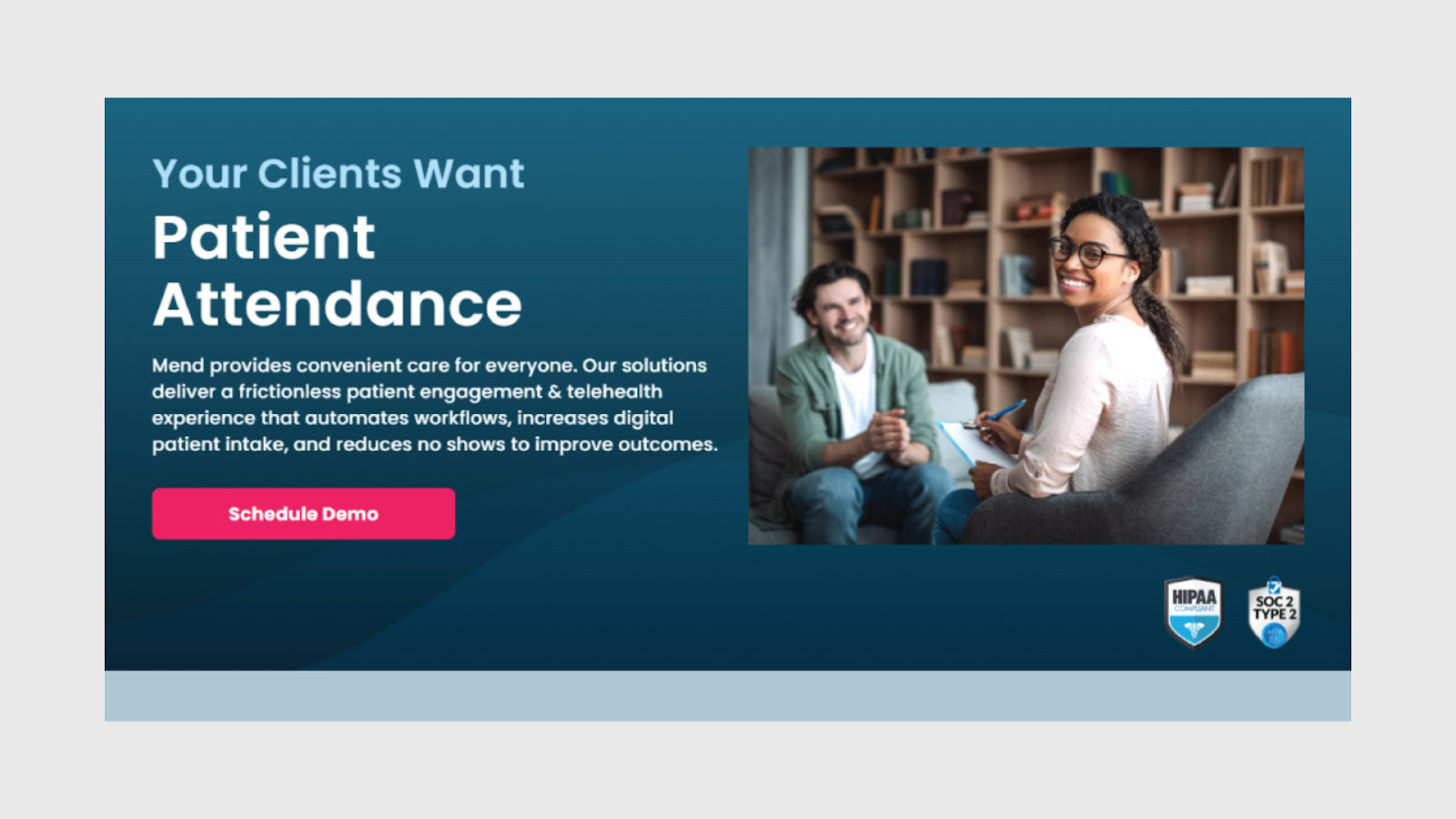
Prediction 2: Enhanced AI and Machine Learning Capabilities in No-Code Platforms
No-code platforms will increasingly integrate AI and machine learning features, allowing HealthTech startups to leverage advanced technologies without the need for specialized data scientists. Startups will be able to use these tools for predictive analytics, diagnostics, and personalized care algorithms. For instance, a mental health startup could use AI-driven tools within a no-code platform to deliver personalized treatment plans, enhancing patient outcomes. These AI features will also enable startups to analyze patient data more effectively, identify health trends, and make data-driven decisions that improve patient care.
The integration of AI and machine learning in no-code platforms will also help startups develop intelligent health applications capable of providing proactive health management. For example, AI-powered chatbots can be embedded in patient care apps to provide round-the-clock support, answer common health questions, and triage patients based on their symptoms. Machine learning algorithms can also be used to analyze large datasets, identifying risk factors and generating insights that aid in preventive healthcare. This increased capability will make no-code platforms indispensable for startups looking to innovate in personalized medicine and predictive healthcare.

Prediction 3: Increasing Focus on Telehealth Solutions
The demand for telehealth continues to grow, and no-code platforms will become the go-to for startups looking to create HIPAA-compliant telemedicine solutions. With the ability to quickly develop video consultation features, patient management systems, and billing integrations, no-code platforms will play a crucial role in the expansion of telehealth. For example, startups can use these platforms to create telehealth apps that offer seamless video consultations and secure data management. As more patients and providers embrace virtual care, no-code platforms will help startups meet the growing demand for convenient, accessible healthcare services.
Additionally, no-code platforms will enable HealthTech startups to develop telehealth solutions that integrate with existing healthcare systems, such as electronic health records (EHRs) and patient portals. This integration will allow for a more seamless flow of information between telehealth services and in-person care, enhancing the continuity of care for patients. No-code platforms can also facilitate the development of specialized telehealth services, such as virtual mental health support, remote physiotherapy, and chronic disease management, catering to the diverse needs of patients in different areas.
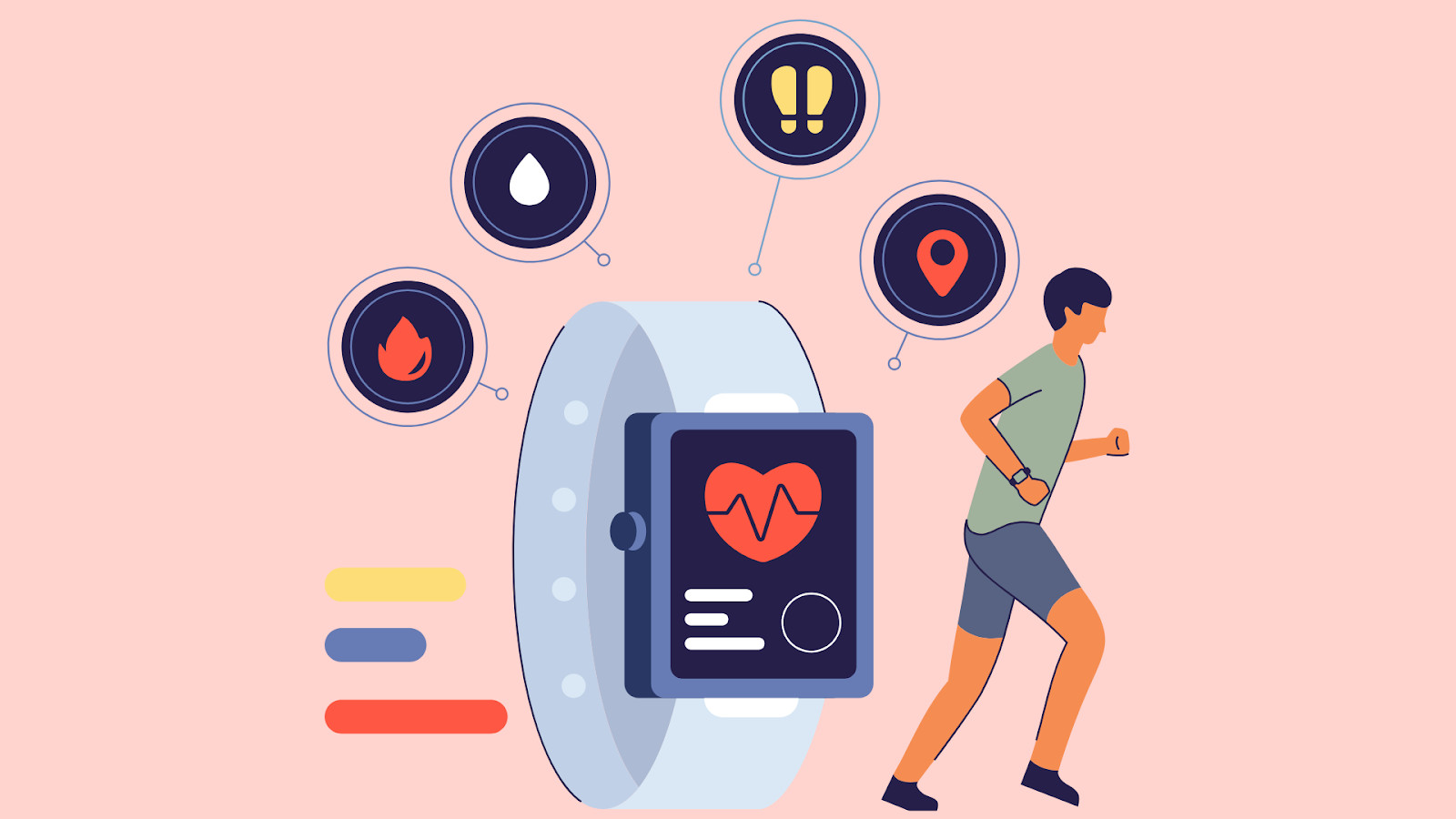
Prediction 4: Seamless Integration with Wearables and IoT
The future of HealthTech will involve the seamless integration of wearable devices and IoT technologies. No-code platforms will enable startups to connect health monitoring apps with wearable devices, such as fitness trackers and glucose monitors, to gather real-time health data. This integration will help provide personalized care and improve patient outcomes. For example, a startup could use no-code tools to develop an app that integrates with fitness trackers to provide continuous health monitoring and personalized recommendations. This real-time data collection will allow healthcare providers to monitor patients’ health more effectively, detect potential issues early, and intervene when necessary.
Moreover, no-code platforms will make it possible for startups to create health ecosystems where data from multiple devices can be aggregated and analyzed to provide a holistic view of a patient’s health. For instance, data from a wearable heart monitor, a blood pressure cuff, and a glucose meter can be combined to offer insights into a patient’s cardiovascular health. By integrating IoT technologies, startups can deliver more comprehensive health insights, enable remote patient monitoring, and provide timely interventions that can prevent complications and improve overall health outcomes.

Prediction 5: Expansion into Global Markets
No-code platforms will make it easier for HealthTech startups to expand into global markets by allowing them to customize and localize their applications for different regions. With built-in localization tools, startups can easily adapt their telemedicine platforms to address region-specific healthcare needs and regulatory requirements, such as language differences and healthcare policies. This ability to quickly localize products will enable startups to tap into new markets, reach more patients, and address healthcare challenges in diverse regions. For example, a telemedicine startup could use no-code tools to create a multilingual app that meets the needs of patients in various countries, helping to bridge the gap in access to healthcare.
Additionally, no-code platforms will allow startups to easily integrate region-specific payment gateways, healthcare guidelines, and compliance requirements, making it simpler for them to operate in multiple countries. This ability to rapidly adapt to different regulatory environments will be especially beneficial for startups targeting emerging markets, where healthcare infrastructure is often lacking, and access to quality care is limited. By offering localized healthcare solutions, HealthTech startups can contribute to improving health outcomes on a global scale, making healthcare more accessible and equitable.
Section 4: The Role of No-Code in Addressing Regulatory Challenges

HIPAA and GDPR Compliance
One of the biggest challenges HealthTech startups face is ensuring regulatory compliance. No-code platforms are evolving to provide built-in features for regulatory compliance, such as Health Insurance Portability and Accountability Act for U.S. healthcare and General Data Protection Regulation for European markets. These platforms simplify the process of adhering to complex regulations, allowing startups to focus on delivering quality healthcare solutions. For instance, no-code tools can include automated data encryption, access controls, and audit logs, which help ensure that sensitive patient information is handled in compliance with healthcare regulations.
Built-In Security Features
As healthcare applications deal with sensitive patient data, security is paramount. No-code platforms will continue to improve their security features, offering enhanced encryption, user authentication, and data protection. These built-in features will help startups meet stringent healthcare security standards without needing to develop custom security protocols. By providing secure data storage and access management tools, no-code platforms can help startups protect patient information and build trust with users.
Audit and Compliance Reporting
No-code platforms will also offer tools for generating audit trails and compliance reports automatically, simplifying regulatory oversight. Startups will be able to track data usage and generate reports to demonstrate compliance with healthcare regulations, reducing the administrative burden on their teams. This capability is especially important for HealthTech startups that need to ensure transparency and accountability in their data handling practices. By automating compliance reporting, startups can save time and resources while maintaining adherence to regulatory requirements.
Section 5: Real-World Examples of No-Code Empowering HealthTech Startups
Telemedicine Startup Success Story
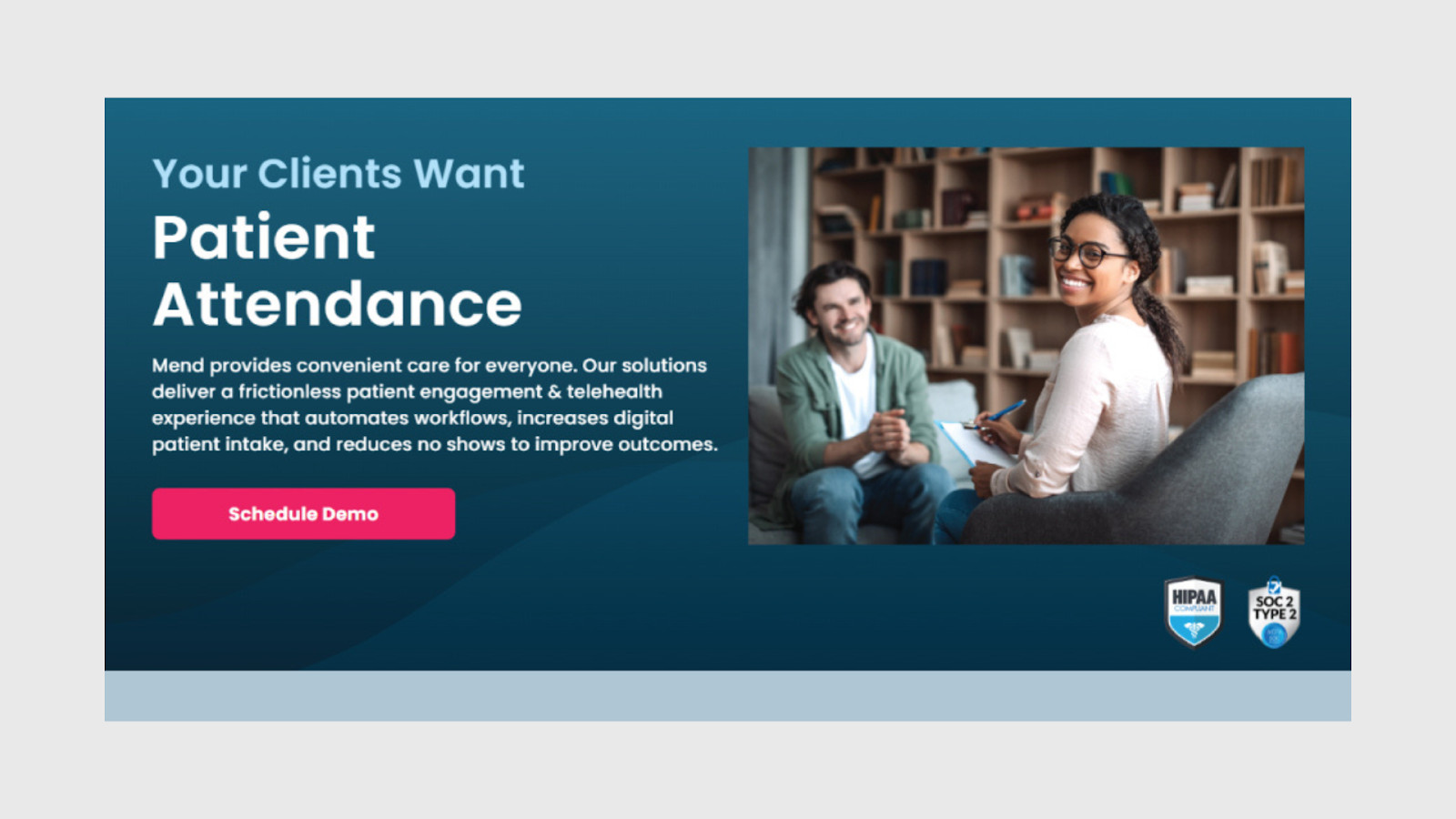
Mend
One notable success story is Mend, a telemedicine startup that effectively utilized no-code platforms to develop its telehealth application. Mend was founded to help healthcare providers engage with patients through video consultations, reducing no-show rates and improving care outcomes. Instead of investing heavily in traditional software development, the startup turned to no-code tools to create a robust telehealth system rapidly.
Using these platforms, Mend integrated essential features like video consultations, appointment scheduling, and billing systems into their telehealth app, allowing healthcare professionals to connect with patients efficiently. By using no-code technology, Mend was able to reduce development time and costs, launching a market-ready product at a fraction of the usual timeframe.
During the COVID-19 pandemic, the demand for remote healthcare services surged, and Mend was well-positioned to scale quickly. Thanks to the flexibility and ease of iteration provided by the no-code solution, Mend could meet this increased demand, onboarding thousands of healthcare providers and patients. The startup’s ability to adapt and respond to changing circumstances showcased how no-code can be instrumental in driving rapid innovation in HealthTech, ultimately making healthcare more accessible for patients.
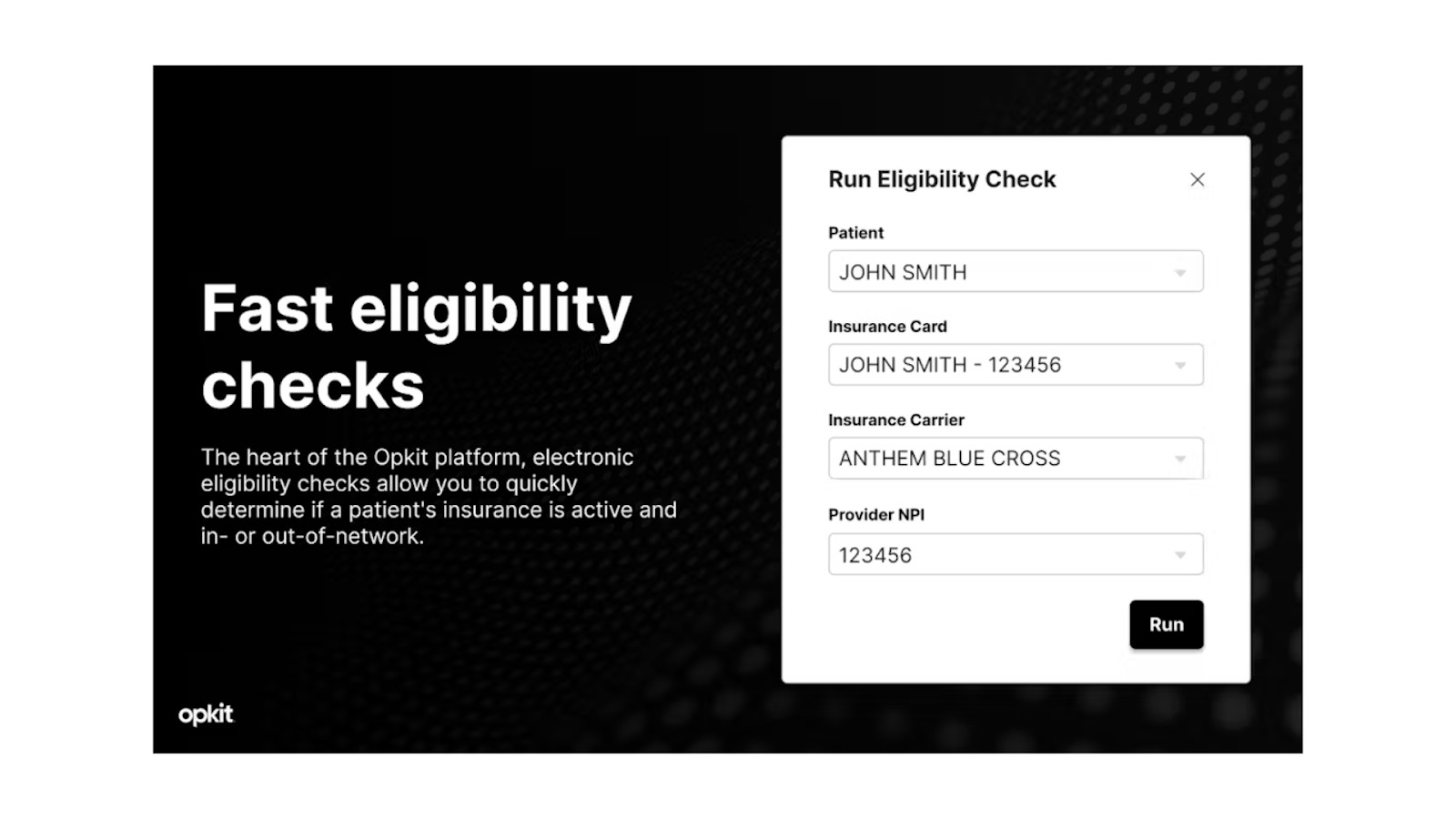
Opkit
It is a telemedicine startup that developed a telehealth insurance eligibility platform to help healthcare providers easily verify patient coverage for telehealth services. Instead of building complex software from scratch, Opkit used a no-code platform to design and launch their solution. Leveraging no-code, they integrated patient data, insurance verification APIs, and provider interfaces seamlessly. This allowed Opkit to launch its platform quickly, gaining traction with healthcare providers during the height of the pandemic. The streamlined approach reduced operational costs and helped clinics ensure that patients were covered for virtual consultations, removing administrative bottlenecks and allowing healthcare providers to focus on delivering quality care.
Wearable Integration Startup
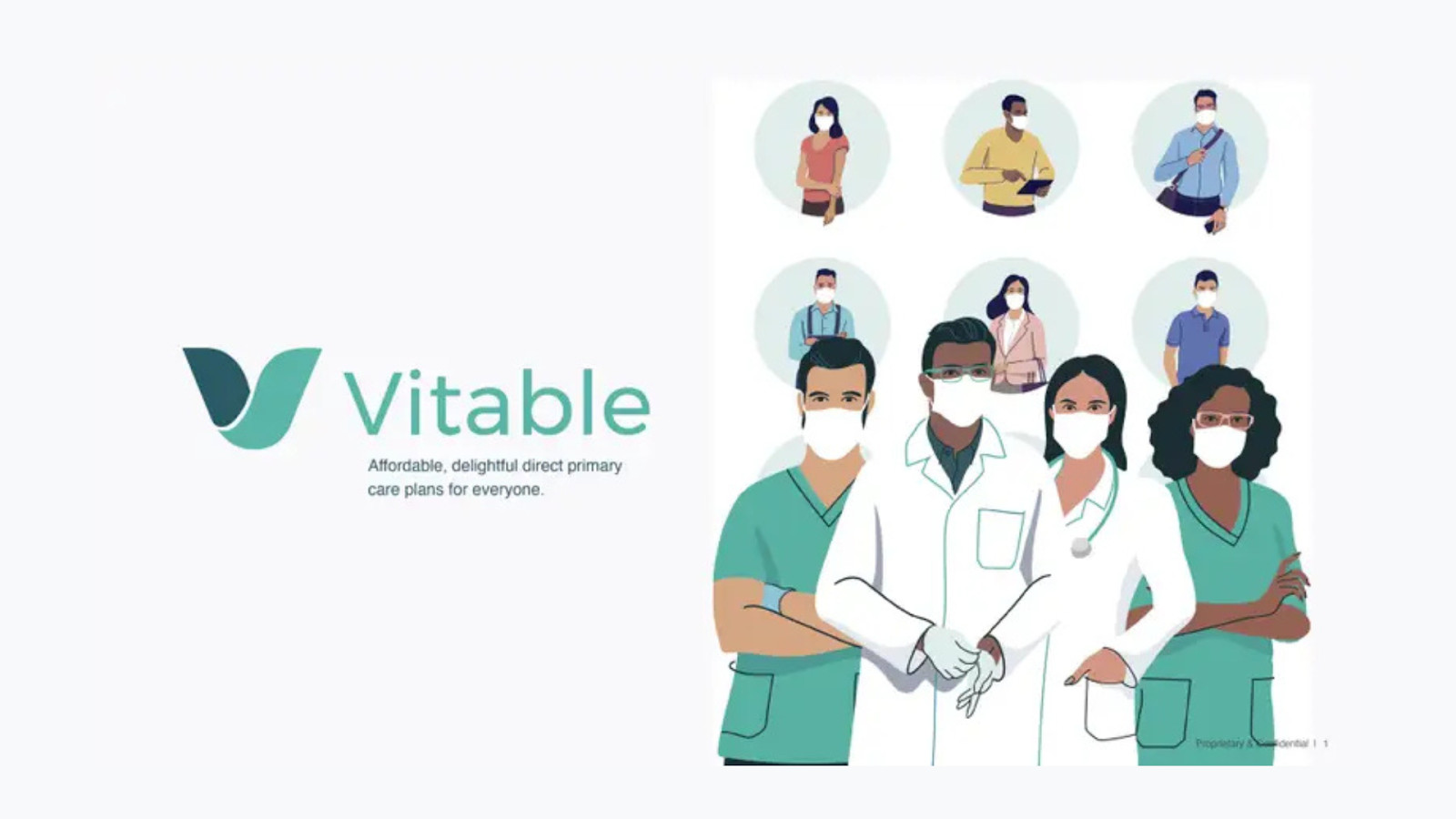
Vitable Health
A real-life example of a wearable integration startup that leveraged no-code to achieve success is Vitable Health.
Vitable Health used a no-code platform to develop an app for health monitoring and preventive care, integrated with popular wearable devices like Fitbit and Apple Watch. The startup’s goal was to help users manage their health more proactively by providing real-time insights based on their fitness data. By using no-code tools, Vitable Health was able to rapidly develop and launch a feature-rich app that pulled data from multiple wearables, such as heart rate, activity levels, and sleep patterns.
The app offered users personalized health recommendations, such as adjusting daily physical activity levels, improving sleep routines, or managing stress. These recommendations helped users form healthier habits in a proactive and engaging way. The no-code platform enabled Vitable Health to create a seamless and user-friendly experience, rapidly iterate on user feedback, and make improvements based on user needs.
Wellory
Wellory is a startup that used a no-code platform to build a personalized nutrition coaching app integrated with wearable fitness trackers. The app allowed users to sync data from wearables like Garmin and Fitbit, providing insights into their daily activities and nutrition habits. By combining wearable data, such as calorie expenditure and step count, with personalized dietary advice from nutrition coaches, Wellory helped users make more informed decisions about their health. The use of no-code tools enabled Wellory to quickly create an intuitive interface for users and develop the necessary integrations with wearable devices, making it possible to launch the app faster and reach a broad audience seeking personalized health and wellness solutions.
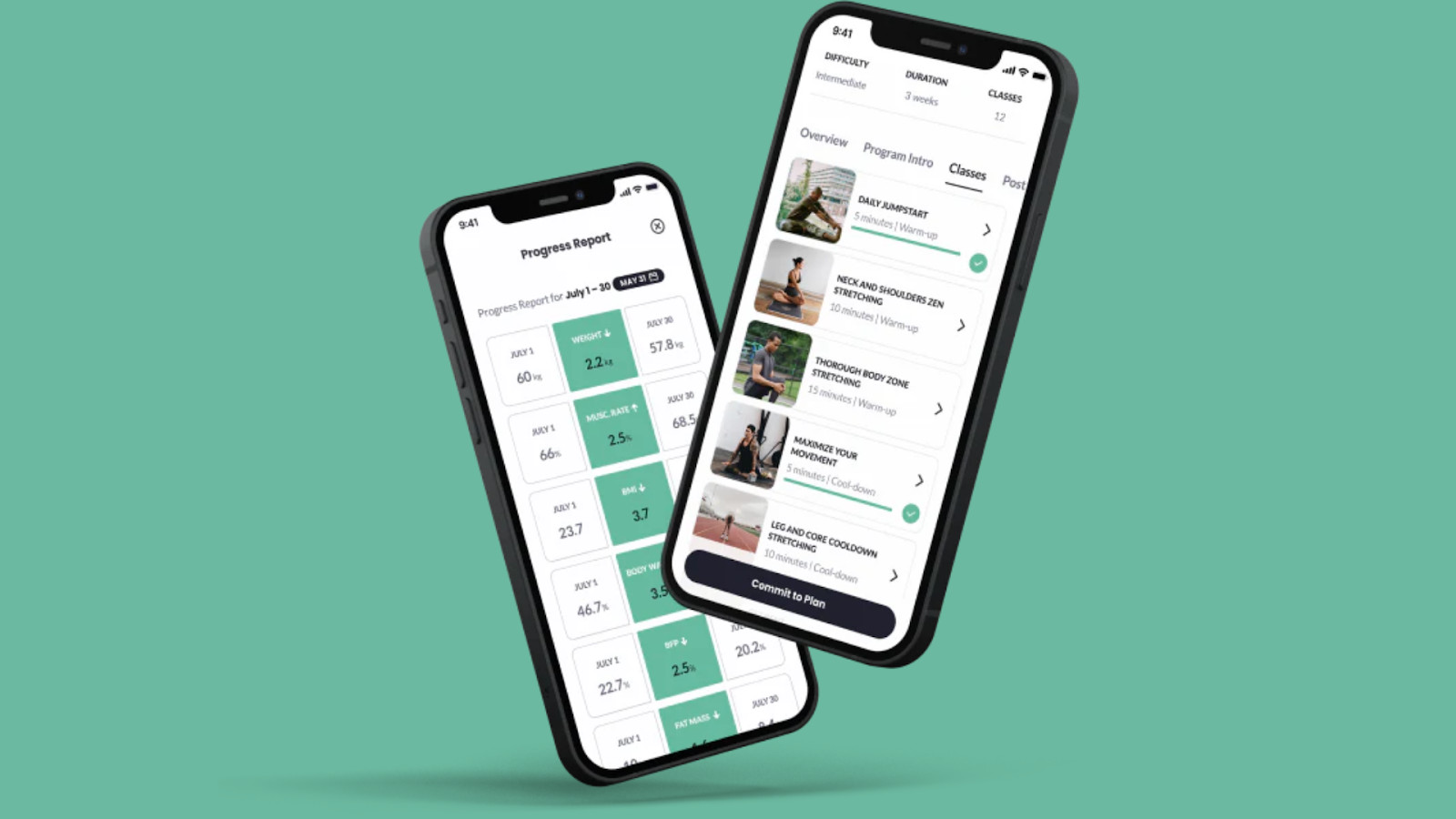
Fittrack
Fittrack developed an app that helps users stay accountable in their fitness journeys by integrating wearable devices such as Apple Watch and WHOOP. Using a no-code platform, Fittrack was able to quickly create an app that provided a comprehensive overview of the user’s health metrics—including heart rate, sleep quality, and activity levels—in a single, user-friendly dashboard. The app also provided personalized fitness challenges based on wearable data to help users stay motivated. Fittrack’s use of no-code tools allowed for rapid prototyping and integration, resulting in a streamlined experience for users. By empowering users with real-time data and actionable insights, Fittrack helped many individuals take proactive steps towards achieving their fitness goals, demonstrating the value of no-code platforms for wearable integration in the health and fitness industry.
AI-Driven Diagnostics Platform
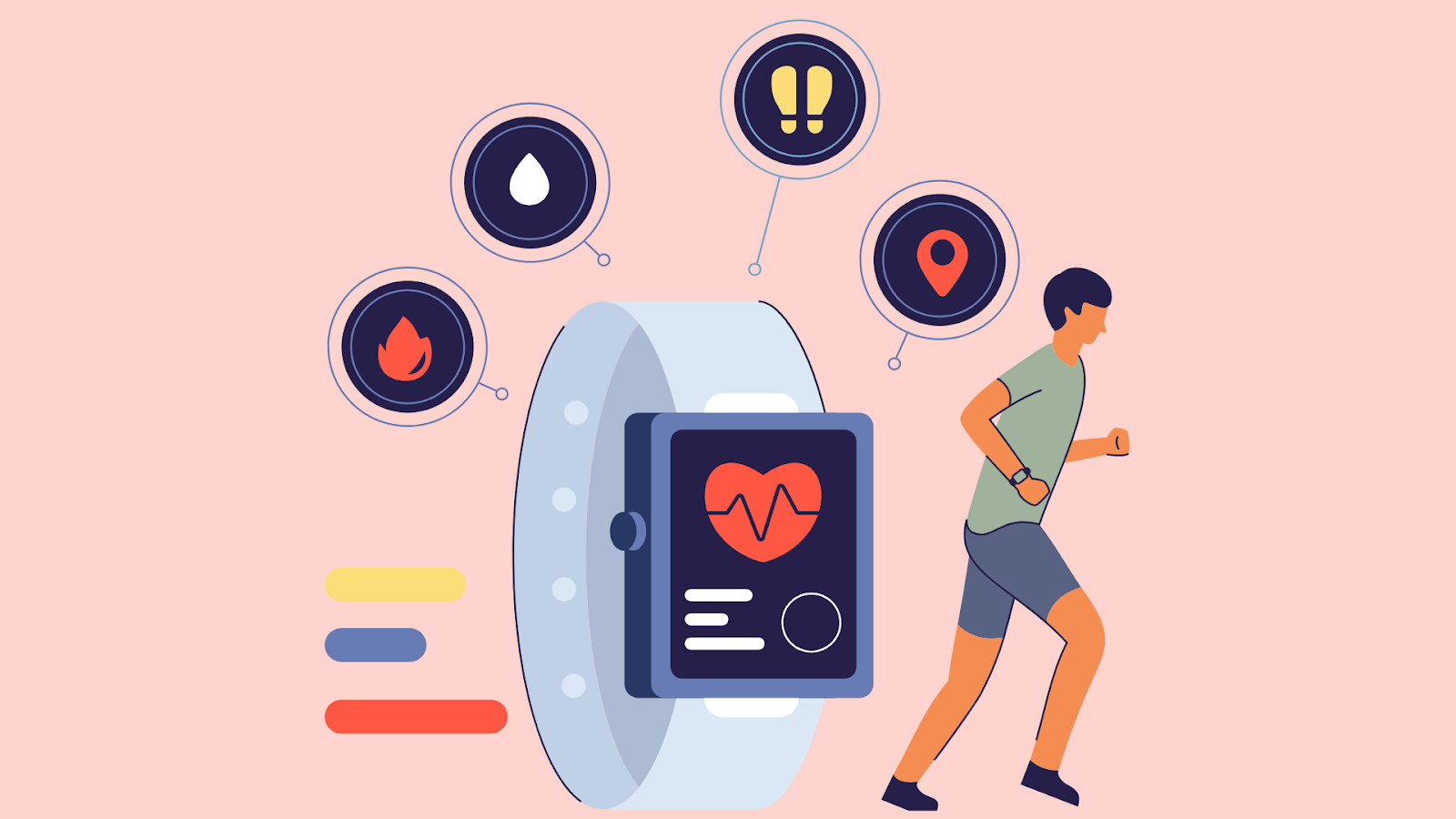
CardioAI
CardioAI used a no-code platform to build an AI-powered cardiovascular diagnostics solution aimed at helping cardiologists analyze patient data more efficiently. The startup developed a system that utilized machine learning algorithms to detect early signs of cardiovascular issues, such as arrhythmias and heart disease, using patient data from wearables and electronic health records (EHRs). By using a no-code platform, CardioAI was able to quickly create and deploy their solution, saving on development costs and focusing their resources on refining the AI model. The platform provided personalized diagnostics and predictive insights, allowing healthcare professionals to make more informed decisions and intervene proactively.
DermAI
DermAI leveraged a no-code platform to create an AI-based dermatology diagnostics app that helps identify skin conditions and recommend treatment options. The app used machine learning algorithms to analyze photos of skin lesions and other symptoms, providing personalized diagnostic results for users. By relying on a no-code platform, DermAI managed to build their app without a full-scale development team, significantly reducing costs and expediting their time to market. The app’s ability to quickly analyze data and provide insights gave healthcare providers a useful tool for diagnosing skin conditions early and accurately, improving patient outcomes while reducing workload for dermatologists.

LungCheck
LungCheck used a no-code platform to develop a predictive diagnostics solution for early detection of lung diseases such as chronic obstructive pulmonary disease (COPD) and lung cancer. By integrating AI algorithms into their diagnostics platform, LungCheck enabled healthcare providers to analyze X-rays and CT scans, identifying signs of lung diseases with high accuracy. The no-code approach allowed LungCheck to rapidly prototype and release their platform, which was especially useful during the pandemic, when healthcare facilities faced an influx of respiratory-related cases. LungCheck’s platform helped doctors make faster, data-driven decisions, improving patient care while reducing strain on radiology departments.
A HealthTech startup leveraged AI tools within a no-code platform to create a diagnostics and predictive healthcare solution. By utilizing these tools, the startup was able to offer personalized diagnostics without needing to hire a development team, significantly reducing costs and time to market. The platform used machine learning algorithms to analyze patient data and provide insights into potential health risks, helping healthcare providers make more informed decisions and offer targeted interventions.
VI. The Future of No-Code in HealthTech Funding and Investment
Increased Investor Interest in No-Code Startups
Investors are becoming increasingly interested in HealthTech startups that leverage no-code platforms due to their lower costs, faster scalability, and reduced risk. No-code startups can demonstrate market traction more quickly, which makes them attractive to investors looking for promising healthcare innovations. By showing early product validation and a clear path to scalability, no-code HealthTech startups can secure funding more easily and accelerate their growth.
More Bootstrapped Startups
No-code platforms will also enable more bootstrapped startups to build functional healthcare applications without massive upfront investment. This democratization of development allows entrepreneurs to launch their ideas without relying on extensive funding, giving rise to more diverse HealthTech solutions. Startups that may have previously been unable to afford the costs of software development can now create impactful healthcare products and compete in the market, driving innovation and addressing unmet healthcare needs.
Mergers and Acquisitions
As no-code-enabled HealthTech startups gain market traction, larger healthcare companies may acquire these startups to enhance their digital capabilities. The ability of these startups to innovate quickly and effectively using no-code tools will make them valuable targets for mergers and acquisitions, helping larger companies stay competitive in the evolving healthcare landscape. These acquisitions will also provide startups with the resources and support needed to scale their solutions and expand their reach.
VII. Best Practices for HealthTech Startups Leveraging No-Code in 2025
Choose the Right No-Code Platform
HealthTech startups should carefully evaluate no-code platforms based on their specific needs, such as security, compliance, and scalability. Choosing the right platform is crucial for ensuring that the healthcare solution meets regulatory requirements and can scale effectively as the startup grows. Startups should consider factors such as the platform’s ability to handle sensitive health data, its customization options, and the level of support provided by the platform vendor.
Ensure Compliance from Day One
Startups must prioritize compliance from the very beginning of development. By using no-code platforms with built-in compliance features, startups can ensure that their applications are HIPAA-compliant and meet other regulatory standards from day one, reducing the risk of costly compliance issues later. Compliance should be integrated into every aspect of the development process, from data handling to user authentication, to avoid potential legal and financial repercussions.
Focus on User-Centric Design
HealthTech solutions must be intuitive and user-friendly to improve the patient and provider experience. Startups should leverage no-code platforms to create apps with a focus on user-centric design, ensuring that their solutions are accessible and easy to use for all stakeholders. By involving healthcare professionals and patients in the design process, startups can gather valuable insights and create products that truly address the needs of end-users, leading to better adoption and satisfaction.
Iterate Based on Data and Feedback
No-code platforms make it easy to iterate on healthcare solutions based on user feedback. Startups should continuously test and improve their products, using data and feedback from patients and healthcare providers to enhance the functionality and user experience of their apps. By adopting an agile approach to development, startups can quickly make changes to their products, respond to user needs, and stay ahead of competitors in the fast-paced HealthTech industry.
Conclusion
No-code platforms will play a pivotal role in shaping the future of HealthTech startups, offering speed, cost-efficiency, and scalability while addressing complex healthcare challenges. As the healthcare landscape continues to evolve, no-code will become an essential tool for startups, enabling them to drive the next wave of innovation in 2025 and beyond.
For HealthTech entrepreneurs, exploring the potential of no-code platforms can be the key to building innovative healthcare solutions that disrupt the industry and improve patient outcomes. By leveraging no-code, startups can bring their ideas to life, overcome traditional barriers, and make a lasting impact on healthcare.
Take your company to the next level and get results with our world class user experience, interface design and implementation.
Get a FREE 30 min Strategy Session

Related posts
Transforming Banking UX with AI
The banking industry is experiencing a dramatic transformation as artificial intelligence (AI) revolutionizes how financial institutions deliver services and interact […]
Becoming a Better Designer in 2022 with Jacalin Ding
With nearly 100k apps being released every month, product design has really taken off in the last ten years or […]
Strava’s 5 Strategies for Rapid Growth to reach $1.5 billion valuation
Strava was merely a blue-skies dream in the year of 1996, says Michael, We were discussing what we could do […]
Creative product design that gets results
Take your company to the next level with world class user experience and interface design.
get a free strategy session
